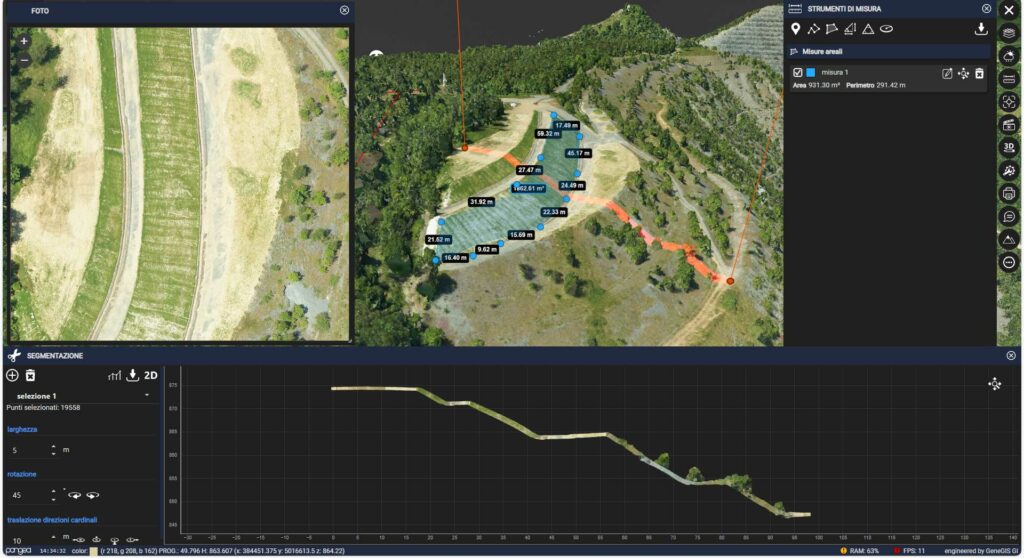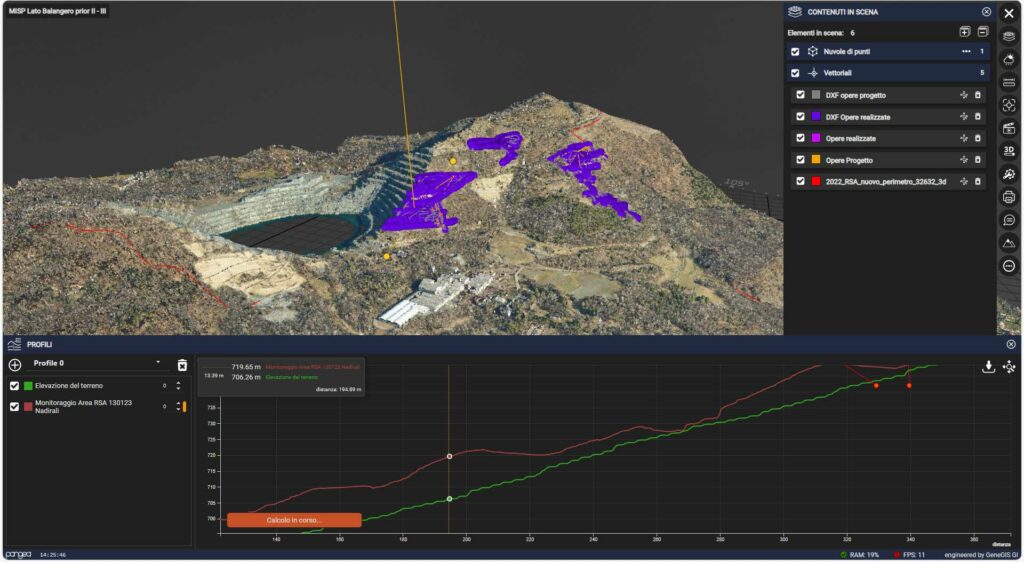
In the province of Turin, a significant environmental transformation is underway, led by RSA (Society for Environmental Remediation and Development), at the former asbestos mines of Balangero and Corio. Designated as a Site of National Interest (SIN), this site presents a unique challenge for environmental remediation and protection. In this endeavor, Pangea Cloud and GeneGIS services play a pivotal role in accelerating digital transformation and supporting the management of ongoing site monitoring plans.
In 2022, RSA embarked on an advanced digitalization project to enhance ongoing remediation monitoring plans. The primary objective of this initiative was and remains to gather high-resolution digital data to provide a comprehensive overview for the accurate assessment of environmental and infrastructural conditions in the area, as well as to analyze the AS IS and TO BE design aspects thoroughly.

Among our services, we offer:
Digital Cartography Harmonization: Through OGC services, access high-quality digital maps from regional and national geoportals.
Provision of Orthophotos and 3D Point Clouds: Detailed multidimensional representations of the environment and facilities.
360° Immersive Inspections: Provide valuable qualitative and quantitative information on facility conditions for detailed revisits and analyses in complex sites safely.
Geo-Referenced Technical Documentation: Critical documentation for management and maintenance by cataloging inspection plans.
Multi-temporal Remote Sensing of the site.
Execution of on-demand flights for specific interventions and delivery of 2D/3D photogrammetric products.
Analysis of data from new airborne sensing technologies.
Historical data analysis to understand territorial evolution.
Implementation of an advanced system for the collection, harmonization, visualization, querying, and sharing of existing information assets.
The data provided by the Pangea Cloud platform is diverse and covers a wide range of information, from environmental analysis to industrial architecture and weather conditions. This wealth of data offers a comprehensive overview of the area and its conditions, enabling RSA to make informed decisions and optimize management activities.
In conclusion, the RSA project and the Pangea Cloud platform represent a significant step towards the sustainable management of the former asbestos mines of Balangero and Corio. This project demonstrates how technology and innovation can play a crucial role in ensuring environmental protection in complex contexts, opening up new opportunities for the remediation and sustainable development of nationally significant sites like this one.
The data provided by the Pangea Cloud platform includes:
- Environmental and Architectural Laser Scanner Surveys of the restoration area
- Satellite imagery
- Aerial photogrammetry
- Documents and technical specifications
- 360° photos
- Ground and drone-captured videos
- Weather data
- Video data captured by streaming cameras
- GBInSAR and InSAR interferometric data from satellites, with real-time analysis compared to temperature trends in the surrounding environment, and much more.